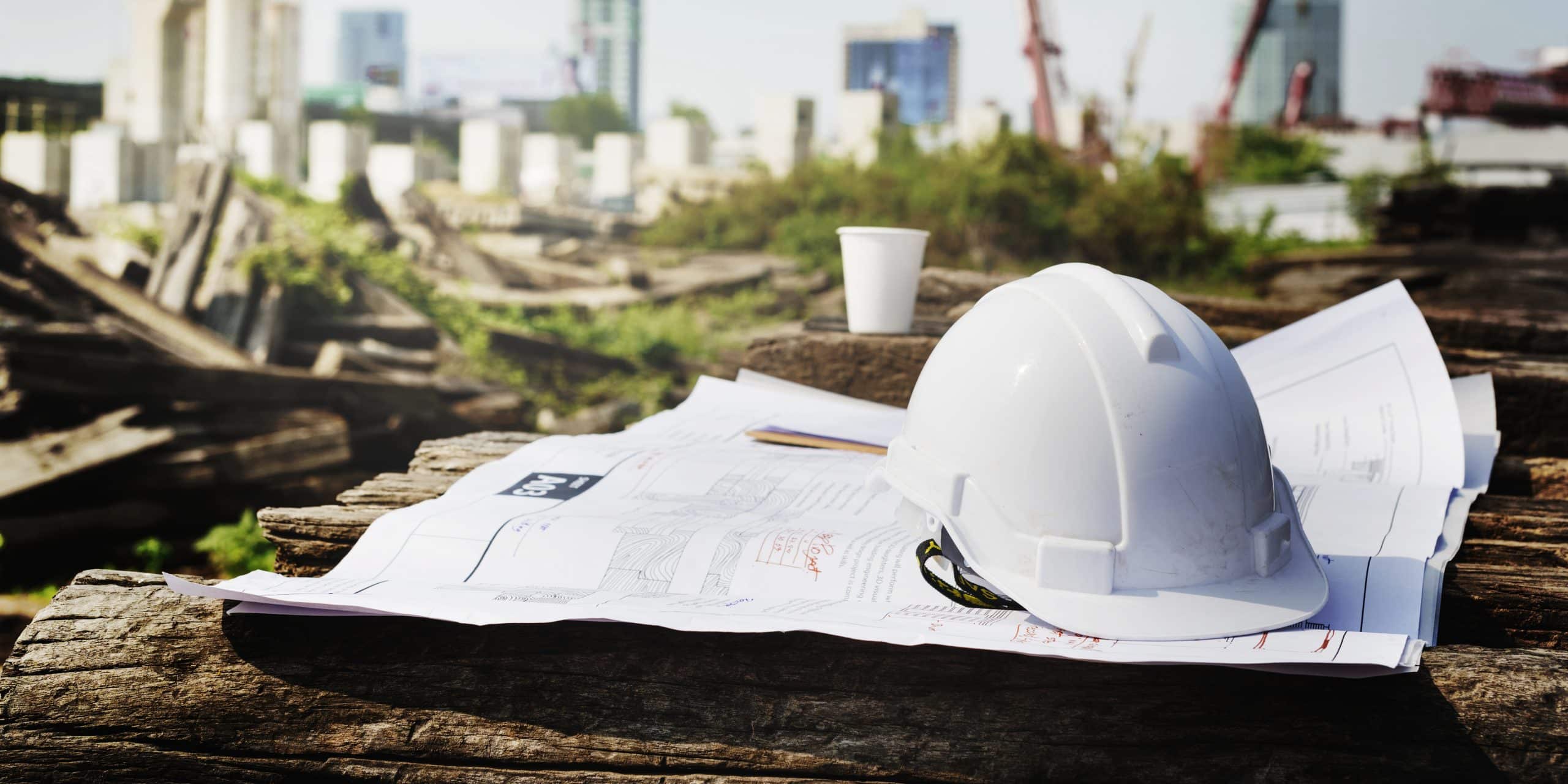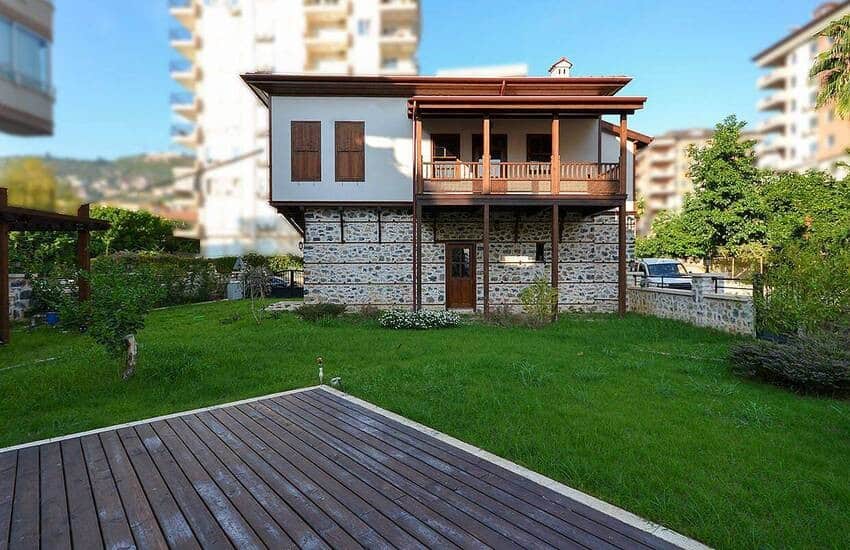Building a House in Turkey: Cost Analysis and Budgeting Tips
In Turkey, building a home is a meticulous process that starts with dreams and unfolds brick by brick.
It’s like crafting a beautiful Kilim, where every choice and financial decision weaves together to create a masterpiece.
Building a house in Turkey requires careful planning, where expertise and costs come together in perfect harmony to compose a well-balanced budget.
Understanding Turkish Construction Costs
The construction landscape in Turkey is remarkably diverse, with costs fluctuating based on regional variations, material quality, and labour expenses. Discerning investors should account for these variances: the cost-efficiency of a seaside villa in Bodrum vastly differs from that of an Anatolian farmhouse. Moreover, navigating the intricacies of Turkish building regulations can significantly impact the final sum—due diligence is paramount.
Current market dynamics dictate that construction costs in Turkey are subject to change influenced by economic factors. Hence, securing an up-to-date, detailed cost analysis from a local expert is crucial in ensuring that your project’s budget aligns with the prevailing economic climate.
Land Purchase Prices
In the Turkish property market, land prices can vary significantly across regions, reflecting both accessibility and local development potential.
Istanbul ranks as Turkey’s most expensive city for land purchases, setting a premium benchmark across the nation.
A comprehensive understanding of the local market is essential when evaluating land prices, necessitating expert insight into trends, regulatory implications, and potential for appreciation.
Securing a prime location often demands a higher investment, yet it promises greater long-term value for the discerning buyer, making it a strategic asset in one’s portfolio.
Building Materials and Labour Rates
The cost of materials and labour significantly impacts the overall budget for constructing a house in Turkey.
- Cement: A staple in construction, prices can fluctuate based on local production levels and global market conditions.
- Steel: Essential for structural support, its price is influenced by international demand and Turkey’s import rates.
- Bricks and Blocks: Used for walls and partitions, their cost is less volatile but varies with quality and type.
- Finishings: Tiles, paint, and fixtures contribute considerably to the cost and vary widely by choice.
- Labour: Skilled and unskilled labour rates, often determined by the region and expertise required.
Material procurement should be timed judiciously to mitigate the impact of market variability.
While costing materials, on-site labour remains one of the most dynamic variables, with regional disparities often observed.
You may be interested in: How to Get a Building Permits in Turkey?
Construction Cost
When it comes to building a house in Turkey, there are several key cost factors to consider. Let’s take a closer look at each of them:
- Land Price Cost: The cost of land can vary greatly depending on the location, size, and amenities of the plot. In popular tourist areas or major cities, the land prices tend to be higher. On average, you can expect to pay around USD 300-500 per square meter for a residential plot in Turkey.
- Building Permits Cost: Before starting any construction project, you will need to obtain the necessary building permits. The cost of these permits can vary depending on the size and complexity of your project. On average, you can expect to pay around USD 10.000 for building permits in Turkey.
- Construction Cost: The cost of construction will depend on various factors such as the size of the house, the materials used, and the level of finishes. On average, the construction cost per square meter in Turkey ranges from USD 600 to USD 800 per m2 . It’s important to note that this cost can vary significantly depending on your specific requirements and the region where you are building.
- Construction Stages: The construction process typically involves several stages, each with its own associated costs. These stages may include site preparation, foundation construction, structural work, plumbing and electrical installations, and finishing touches. It’s important to budget for each stage separately to ensure a smooth construction process.
By considering these key cost factors and budgeting accordingly, you can better plan and manage the expenses involved in building a house in Turkey.
Permits and Legal Fees
Navigating the bureaucratic landscape is critical.
In Turkey, building a house necessitates navigating a complex legal system. There are costs associated with obtaining necessary permissions from various authorities, which include construction permits, water and sewage connection permissions, as well as electricity and gas installation approvals. Additionally, fees for the cadastre and notary can add up to the budgetary outlay for these services.
Ensure compliance with zoning regulations.
Securing building permits is mandatory and comes at a cost. These costs can vary widely across municipalities and may fluctuate over time, particularly in response to changes in local regulations or state economic policies.
Legal representation often expedites the process.
The use of a solicitor and/or an architect is often invaluable in managing the permitting process. As of the first quarter of 2023, legal fees for these professionals generally align with the scale and complexity of the project undertaken. These fees should be factored into the budget to avoid unpleasant surprises down the line.
Design Choices Impacting Budget
Certain architectural styles may incur higher costs due to complexity or material requirements. Turkish vernacular, with its emphasis on traditional craftsmanship, can significantly inflate the overall budget.
Decisions such as incorporating energy-efficient features or luxury finishes will impact both the initial cost and long-term expenses. Smart home systems, high-grade insulation materials, and premium flooring options are all examples that can escalate a project’s fiscal scope substantially.
Choices between standard and custom-built features will also have fiscal repercussions. Bespoke joinery or unique architectural elements amplify not only aesthetic appeal but also the financial outlay involved.
Architectural Style Considerations
The architectural style you select profoundly influences construction costs.
- Ottoman: Requires intricate design details, possibly raising expenses.
- Contemporary: May involve premium materials and cutting-edge technologies.
- Mediterranean: Characterised by stucco walls and tiled roofs, affecting material costs.
- Aegean: Simple layouts with local materials can be cost-efficient.
- Traditional Anatolian: Incorporates stone and woodwork, which may increase labour costs.
Compatibility with local aesthetics is essential for resale value.
A judicious selection balances cultural resonance with economic practicality.
Interior Finishes and Features
The finishing touches within a home are pivotal in defining its character and comfort.
- Flooring: Choices range from ceramic tiles to premium hardwood.
- Paints and Wall Finishes: Options include standard emulsion or luxury textured plasters.
- Cabinetry and Built-Ins: Custom joinery can dramatically alter costs.
- Countertops: Material selection, such as marble or quartz, impacts budgeting.
- Lighting Fixtures: Economic standard models versus designer statements.
- Hardware and Fittings: Varied prices for items like door handles and taps.
- Bathroom Sanitaryware: From basic models to high-end brands.
Mindful selection of these elements can prevent budgetary overruns.
Striking a balance between aesthetics and cost is achieved through careful sourcing and shrewd negotiation with suppliers.
Sustainable Building Options
Sustainable design principles are integral in modern Turkish home construction, allowing for environmentally conscious choices.
- Energy Efficiency: Utilisation of high-performance insulation and triple-glazed windows.
- Renewable Energy: Adoption of solar panels or heat pump technology for clean energy production.
- Water Conservation: Integration of rainwater harvesting systems and low-flow fixtures.
- Sustainable Materials: Use of local, recycled, or sustainably sourced building materials.
- Smart Technology: Implementation of home automation for efficient energy management.
- Green Roofing: Incorporating living roofs to enhance insulation and biodiversity.
These components are not only ethical but can also result in long-term financial savings.
Choosing green building certifications like LEED or BREEAM can add value and credibility.
Cost-Saving Strategies
Optimizing the efficiency of material usage through advanced planning and precision in design can significantly lower costs. By deeply analysing each stage of construction for potential savings, such as bulk purchasing, employing cost-effective labour, or leveraging local materials, the overall expenditure can be markedly reduced without compromising on quality.
To further curb costs, consider engaging in partnerships with emerging suppliers who may offer competitive pricing in exchange for a steady stream of business. This, coupled with meticulous budget tracking and proactive project management, can prevent overruns and ensure financial prudence throughout the building process.
Timing Your Build Wisely
Strategic planning plays a pivotal role in the construction timetable, impacting costs, labour force efficiency, and the availability of materials. A well-timed build can result in significant cost savings.
Seasonal weather conditions must be considered to avoid construction delays.
Indeed, the selection of timing can influence the costs associated with labour and materials, potentially offering economic advantages.
Avoiding peak season for construction may result in lower demand and thus more favourable pricing for resources.
The complex dance of synchronising project phases with seasonal advantages can ensure that each construction stage progresses efficiently, potentially slashing costs and circumventing delays caused by inclement weather or supplier shortages.
Furthermore, aligning the construction calendar with local festivals and holidays can prevent disruptions in the workflow, ensuring a smooth progression towards completion.
Sourcing Local Materials
Optimise resource procurement via localised channels.
In Turkey, the utilisation of indigenous materials is not only a nod to cultural authenticity but also an economic boon. By sourcing local stone, timber, and other basic construction materials, one reduces transportation outlays, supports the local economy, and minimises environmental impact. Moreover, local resources are often more readily adaptable to regional climatic conditions.
Ensure suppliers are reliable and materials, top-quality.
Preference for regional materials should not undercut quality standards. It is imperative to carefully vet local suppliers to guarantee that materials meet essential construction requirements. This attention to detail safeguards structural integrity and operational longevity.
Materials variance affects budgeting – factor this early on.
The cost differential between local and imported materials can be striking – it is thus crucial to account for this when forecasting expenses. Adopting a strategy that incorporates regional resources from the outset can result in substantial cost benefits.
Embrace local aesthetics for a harmonious architectural dialogue.
The strategic adoption of indigenous materials fosters an architectural vernacular resonant with the area’s heritage. Grounding a new build in its environmental and cultural context not only enhances aesthetic appeal but also affirms a sense of place, adding invaluable authenticity.
DIY vs Professional Services
Undertaking the construction of a house on one’s own, often termed ‘DIY’ (Do It Yourself), can afford significant savings, yet it demands considerable expertise and an extensive time commitment. Conversely, engaging professional services may entail higher costs but assure expertise and efficiency.
A DIY approach reinforces autonomy and potentially reduces expenses.
However, building complexities often exceed amateur skill sets, necessitating professional intervention (architects, engineers, and contractors) for compliance and safety.
One must weigh expertise against costs when selecting professionals; qualifications, experience, and reviews should guide this important decision.
Individuals may encounter limitations when attempting specialised tasks, which if poorly executed, could lead to higher rectification costs and potential risks to structural integrity.
Thus, a delicate balance must be struck between aspirations for economy and the imperative to adhere to stringent construction standards, which professionals consistently meet.
In summary, one must assess personal capabilities against the intricacy of house building in Turkey. While DIY approaches cater to budget constraints, professional guidance is often indispensable for successful project execution.
Budget Management Essentials
Effective budget management is a cornerstone of prudent house construction in Turkey, ensuring financial stability throughout the project lifecycle. A meticulously crafted budget lays the foundation for fiscal discipline, informing every expenditure and mitigating the risk of cost overruns.
Robust cost forecasting is instrumental, demanding a rigorous assessment of all potential expenses. Integrating a contingency fund within your budget is an astute step to cushion against unforeseen costs, whilst also binding spending to a realistic framework, safeguarding against financial pitfalls.
Execution against the budget should be dynamic, with reassessment serving as a regular fixture in the process, adapting to changes in material costs and labour rates. Thus, maintaining fiscal vigilance is vital to the project’s solvency.
Accurate Cost Forecasting
Accurate cost forecasting is a critical component of successful budget management, particularly in a dynamic construction market like Turkey. Fluctuations in material costs and currency exchange rates must be monitored closely to maintain the integrity of the budget.
Long-term projections should harness historical data and market trends. Seasonal adjustments can impact labour and material costs significantly.
Strategic planning must encompass the entirety of the construction phase, factoring in both direct and indirect costs. This includes the price of materials, labour, permits, and design fees, as well as contingencies for unforeseen circumstances that could potentially derail fiscal plans.
The most effective forecasts engage iterative reviews and updates. They must be responsive to the changing circumstances intrinsic to construction projects. By incorporating provisions for “change orders” within the forecasting model, one ensures both flexibility and preparedness for modifications that may arise during the construction phase.
Contingency Planning
In the realm of house construction in Turkey, a robust contingency plan is an indispensable component of budgeting. Indeed, without it, the fiscal stability of a project is heavily compromised, irrespective of the upfront budget rigor. Contingency funds act as a fiscal buffer to absorb unforeseen expenses during the construction process.
It is prudent to allocate at least 10-15% of the total budget for contingencies. This percentage can be adjusted based on the project’s complexity and risk assessment.
Construction is laden with unpredictability, ranging from sudden price spikes in materials to unexpected subsoil conditions. Including a monetary provision (the contingency fund) within the budget affords a substantial cushion.
A well-calibrated contingency reserve should reflect the project’s unique risk profile. It is informed by detailed risk analysis and aligns with the investor’s appetite for risk exposure, ensuring that it is neither excessively cautious nor recklessly lean.
The art of contingency planning is to judiciously monitor its usage. It should not act as an easy out for routine overruns but as a strategic reserve for genuine surprises. The diligent governance of these funds ensures that they are expended only when necessary, preserving their value for truly unpredictable circumstances.
Ultimately, the goal is to conclude the project within the original budget frameset. Employing a disciplined approach to managing contingency funds is often what differentiates successful financial execution from cost overruns.
Tracking Expenses During Construction
Vigilance is paramount in budget adherence.
Efficient financial tracking is the bedrock of successful construction project management. It involves the meticulous recording and frequent review of every transaction, ensuring no expense escapes oversight. Implementing dedicated software or bespoke spreadsheets can facilitate this process, enabling real-time visibility into the flow of funds. Frequent reconciliations are not just recommended—they are essential to stay ahead of potential budget overruns.
Regular audits ensure continuous expense alignment.
Financial discrepancies can spiral if not addressed promptly. It’s crucial to schedule regular audit meetings where expenditures are compared with the budget forecast. Exceptions must be scrutinised, and justifications for variances must be sought, documented, and understood to prevent the recurrence of similar issues.
Analytics offer insights beyond mere expense tracking. By assessing expenditure trends and forecasting future cash flows, project teams can anticipate and mitigate financial risks. This approach is emblematic of the sophisticated financial management practices that must underscore a construction project, particularly as we navigate the challenges of the 2023 fiscal landscape. Dev Components types of analysis can expose areas of inefficiency and suggest corrective actions that preserve financial integrity while ensuring project milestones are achieved without compromise.
Frequently Asked Questions
What factors influence the cost of land when building a house in Turkey?
The cost of land in Turkey can vary depending on factors such as location, size, and amenities of the plot.
How much does it typically cost to obtain building permits in Turkey?
The cost of building permits in Turkey can vary depending on the size and complexity of the project.
What factors affect the construction cost of a house in Turkey?
The construction cost of a house in Turkey can be influenced by factors such as the size of the house, materials used, and level of finishes.
What are the different stages involved in the construction process?
The construction process typically involves stages such as site preparation, foundation construction, structural work, plumbing and electrical installations, and finishing touches.
Get Proposal for your project
Get a quote today!













